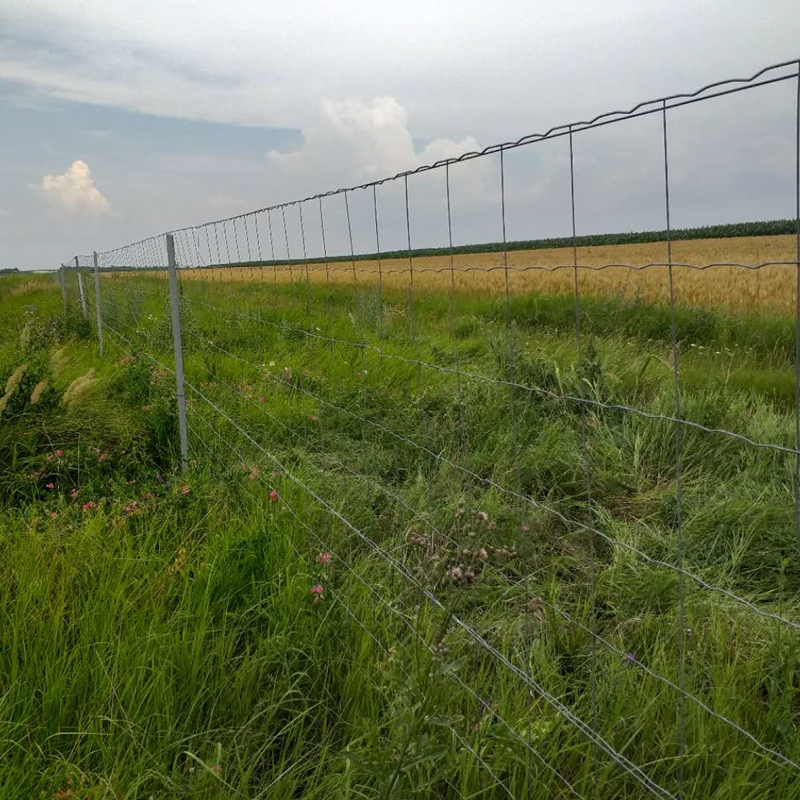Dec . 06, 2024 10:35 Back to list
Barbed Wire Fencing Production Facility for Durable Security Solutions
The Importance of Barbed Wire Fencing A Look into Barbed Wire Fencing Factories
Barbed wire fencing has been a cornerstone of agricultural and security practices for over a century. The demand for durable, effective fencing solutions has led to the rise of specialized factories dedicated to the production of barbed wire. These factories play a crucial role in meeting the needs of farmers, ranchers, and security personnel across the globe. In this article, we will explore the significance of barbed wire fencing, the manufacturing process in barbed wire fencing factories, and the various applications of this essential product.
Understanding Barbed Wire Fencing
Barbed wire is made by twisting together strands of wire, with sharp barbs or points strategically spaced along its length. This design serves to deter livestock from escaping and to prevent intruders from trespassing. The low cost, ease of installation, and effectiveness of barbed wire fencing make it one of the most popular fencing solutions worldwide.
Barbed wire fencing has evolved from its initial use to encompass a variety of applications. In agriculture, it is primarily used to contain livestock, ensuring that animals remain in specified areas and safeguarding crops from grazing. In urban contexts, barbed wire serves as a security measure, protecting properties from unauthorized access. It is commonly employed in correctional facilities, military bases, and sensitive installations as a deterrent against potential intruders.
The Manufacturing Process
Barbed wire fencing factories are equipped with advanced machinery and technology that streamline the production of barbed wire. The manufacturing process begins with the selection of high-quality steel or galvanized wire, which is essential for durability and rust resistance.
1. Wire Drawing The raw metal wire is drawn through a series of dies to obtain the desired thickness. This step is critical to ensure that the wire possesses the necessary strength to withstand the elements and potential physical stress.
2. Barbing After the wire is drawn to the appropriate thickness, the next step is the creation of barbs. This is usually achieved using a barbing machine, which twists and segments the wire at regular intervals to form the sharp points. The spacing of the barbs can be customized based on customer specifications, adapting to various needs and applications.
barbed wire fencing factory

3. Twisting and Spooling Once the barbed wire strands are produced, they are twisted together to enhance their strength and flexibility. This final step involves coiling the wire onto spools, ready for shipping to retailers or direct customers.
4. Quality Control Throughout the manufacturing process, quality control measures are implemented to ensure that the barbed wire meets industry standards. This includes tests for tensile strength, corrosion resistance, and uniformity of the barbs.
Applications of Barbed Wire Fencing
The versatility of barbed wire fencing allows it to be used in various sectors. In agriculture, farmers rely on it to corral cattle, sheep, and other livestock, establishing clear boundaries that enhance farm management. By preventing livestock from wandering off, barbed wire significantly reduces the risk of accidents, especially near roadways.
In the realm of security, barbed wire fencing is an effective tool for protecting properties. Its intimidating appearance and sharp edges deter criminals, making it a popular choice for residential, commercial, and industrial sites. Specialized applications also include its use in military installations, where heightened security is paramount.
Additionally, barbed wire is utilized in wildlife protection efforts. By creating barriers in sensitive ecological zones, it helps to manage the movement of animals, protecting endangered species while minimizing human-wildlife conflict.
Conclusion
Barbed wire fencing remains an integral component of agricultural and security practices due to its effectiveness and low cost. The factories producing this essential product employ advanced technology and strict quality control to ensure that the fencing meets diverse needs. As industries continue to evolve and demands change, the role of barbed wire fencing factories in providing innovative fencing solutions will remain crucial. Whether for keeping livestock in or securing properties, barbed wire continues to be a reliable choice for countless applications worldwide.
-
Durable Hot-Dip Galvanized Farm Field Wire Fence | Farm Security
NewsAug.01,2025
-
Temporary Fencing Solutions-Anping County Xingzhi Metal Wiremesh Products Co.,Ltd
NewsJul.31,2025
-
Hop Dipped Galvanized / PVC Coated Temporary Fence - Anping County Xingzhi Metal Wiremesh Products Co., Ltd.|Durable Temporary Fencing&Cost-Effective Security Solutions
NewsJul.31,2025
-
Hop Dipped Galvanized / PVC Coated Temporary Fence-Anping County Xingzhi Metal Wiremesh Products Co., Ltd|durable temporary fencing&corrosion-resistant solutions
NewsJul.31,2025
-
Temporary Fencing Solutions - Anping County Xingzhi Metal | Galvanized PVC Coated Fences
NewsJul.31,2025
-
358 Anti-Climb Welded Wire Mesh Fence - High Security, Durable
NewsJul.31,2025



